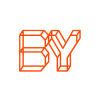Regardless of whether you are a well-established company or a startup, the consequences of a weak business model are the same. For the existing company, it’s the inability to recognize that the company’s business model is no longer relevant and the subsequent failure to pivot will eventually doom the company. For the startup, its convincing yourself and potentially investors, that you have a business model that will ignite or disrupt an industry, but without any early revenue, and that is potentially dooming.
The graveyard of startups is full of companies that failed to get to revenue early. Failory lists 67 startups that failed, possibly due to a poor business model and a lack of early revenue. For startups, the difference between survival and running out of runway always comes down to taking your eyes off of cash flow. Why? Because when you’re in the middle of the startup run, it’s pretty easy to fall into a trap of wasting time on feel-good tasks that feel like progress but don’t bring in any money. Perhaps its building partnerships, or focusing on good PR. Maybe you are focused on “wins” that look good, like 40,000 website downloads but don’t bring in any real revenue.
If you believe that the odds of startup survival depend on how fast you can generate revenue, then getting to revenue fast is to do nothing else but seek it out. Here are some of the things you should consider in getting to revenue fast.
Don’t raise investor money early. Raising money is not the same as generating revenue. Look for ways to generate real revenue with an early customer to test out not just the business model but the product or service. No one pays you for a business model. Test your product or service benefits with early customers willing to pay and adjust accordingly on the customer feedback. Plus you will keep your valuable equity for when you might really need it.
Build out the product not the company. Don’t waste early time and effort building out a company with an expensive website, an office space, a cool t-shirt and a host of other unnecessary things. Work out of home, a co-working space or a friend’s office (for free) and focus all your energy on building out the product or service. Test that with paying customers. Remember, no matter how cool your brand is, your mission or how far out your business plan goes, you’re not an entrepreneur until someone pays you money for something you’ve sold them.
Go to work. In the early days, you are the product developer, marketer and project leader. Don’t get ahead of yourself and hire several employees before you have revenue. Use friends, freelancers if you have to but don’t build out a team until you can afford it. Utilize SaaS tools, simple financial software and sales hutzpah to get your first paying customers. If you have them, lean on mentors and advisors for advice.
The first version is supposed to be ugly. Don’t try and create the perfect product or service as you will launch with that mentality. Get it to good enough and test it with early customers. Reid Hoffman, co-founder at LinkedIn once said that if you are not somewhat embarrassed by your first version of your product/service, then you are launching too late. You need the early feedback from the first customers to create the next refinement or possible pivot. Narrow it down and get to an important feature set for your first segment of customers. Then collect the money, figure out the next priorities based on what works and what breaks, and move on to building the next feature.
Execution before innovation. If you think about successful startups, they started simply by doing or testing something. In the early days, it might not be about innovation but more about execution. Airbnb’s co-founders rented their own bedrooms on a busy weekend in San Francisco to test if someone would actually pay them for their rooms. They did not have a fancy website, a sophisticated algorithm, other cross sell services, etc. They simply tested the notion that people would pay to rent their rooms for the weekend.
Focus on your first 10 customers. In the early days, focusing on TAM (Total Addressable Market), SAM (Service Addressable Market), or SOM (Service Obtainable Market), might look good in a pitch deck, but to get early revenue fast, you need to really focus on your first 10 customers. Who are they, where are they and how can you close them? You might be in a multi-billion marketplace but you need early paying customers. Learn from the first ten customers, then go to 20 customers. Learn from them, then get to 30, and so on until you have definitive, repeatable, scalable revenue streams.
Looking for funds to start up your business? Talk today to Byline Bank—a top five SBA lender.
This article was written by Bernhard Schroeder from Forbes and was legally licensed through the Industry Dive Content Marketplace. Please direct all licensing questions to [email protected]





